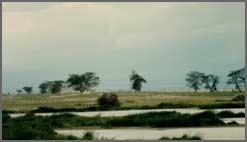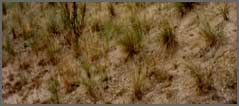Biosphere Contents
5. Development
There are three major theories of succession
The concept of succession can be attributed initially to the work of J.E.B. Warming in the 1890s and H.C. Cowles in the 1900s. N. Pears (1985) uses the example of a recent rock fall on a scree slope in the Lake District to illustrate a typical succession series (see figures 1-6). Variants of the theory of succession have been put forward. (see figures 7-9). A common factor in all three is the initial colonisation carried out by pioneer species which are usually fugitive or opportunistic and are quick growing and rapidly dispersing. Where the differences occur is in the method by which these pioneer species are replaced.

The classic theory is based on the argument that species being replaced in the succession will have altered their environment so that it is less suitable for their own needs whilst becoming more suitable for the needs of the replacing species. In other words, as a plant species develops it changes the microhabitat and microclimate around it due to both an increase in height, which reduces local wind speed, and organic decomposition which will build up the soil and increase its fertility. As this initial species may have been a pioneer species especially tolerant of harsh environments it may not subsequently be able to survive competitively in the richer conditions it has helped to create.
The initial floristic composition theory suggests that species development at any one site depends largely on who gets there first. There is not necessarily an orderly progression because existing species will try to maintain their hold on the site.
The tolerance model suggests that replacements are not necessarily affected by early colonisers, and later species in the succession tend to be those which can tolerate lower levels of resources than earlier species.


Can you explain succession?